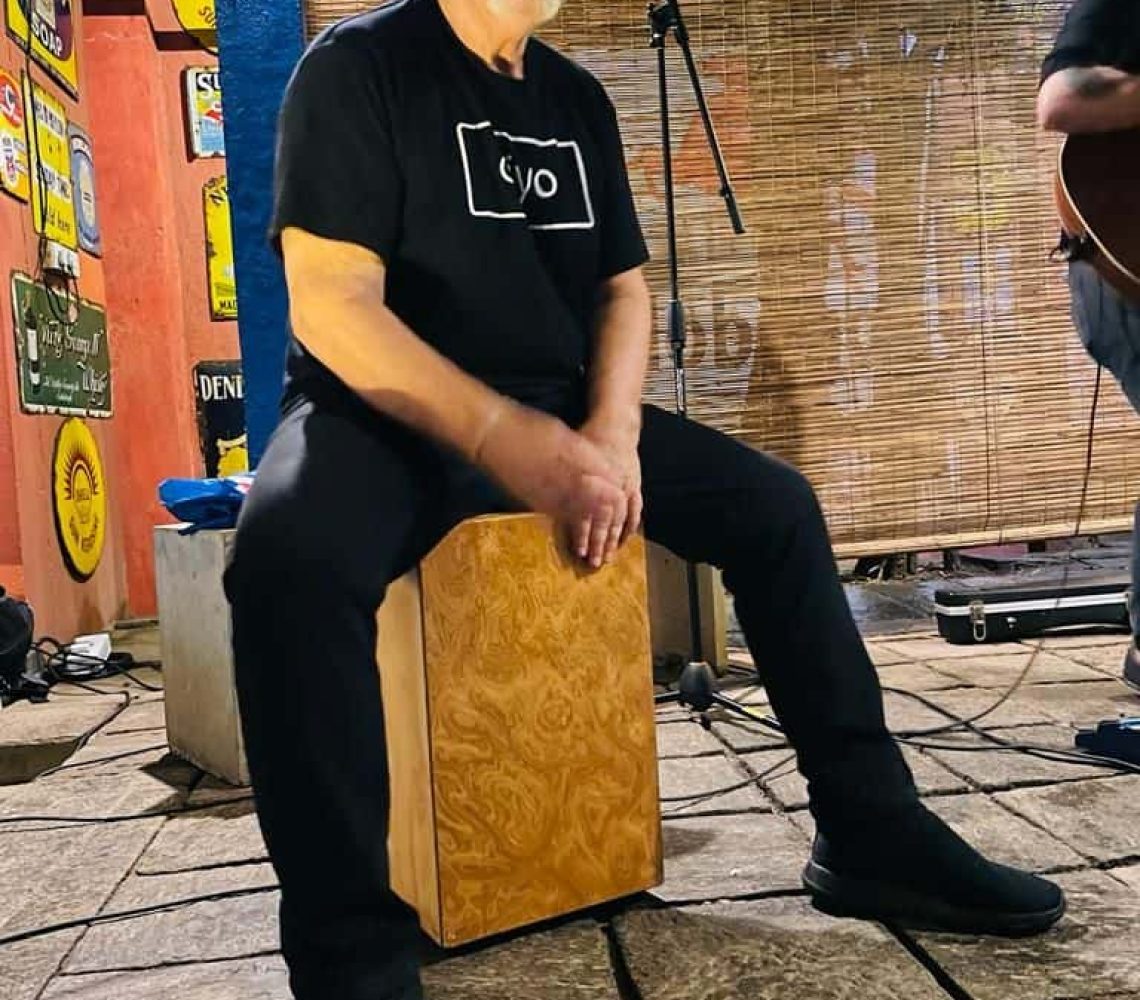The cajón drum, described as the epitome of simplicity is the go-to option for playing the drums. Its history is quite a story in itself!
The story of my drumming goes back to Zambia. I still have the simple African toy-looking drum my parents bought me as a five-year-old. It’s more than a half-century old. At 16 I joined a band which had four guitarists, and someone had to be the drummer. “Who is the worst guitarist in the band?” One member asked. Well, it was me so I started with a simple snare drum and one cymbal. This was followed by an old five-piece Olympic drum set, and I played in working men’s clubs in the north of England.
My dad later said, “the worst instrument to give your child, is a drum, loud, bulky and annoying”.
My favourite drummers when I look back were Buddy Rich, a jazz drummer with his own orchestra, John Bonam of Led Zeppelin who died at 32, and Keith Moon of The Who, an amazing physical drummer who also died at 32.

The cajón drum is an easy way to start as a potential drummer, learning rhythm beats and playing on this box drum, and then creating or being part of a band. It’s space efficient and can be easily amplified by putting a bass mike through the hole in the back of the box.
The box-shaped percussion instrument is originally from Peru. Back in the 1800’s slaves would use crates to bang beats on. In 1977 the Spanish took up the drum and it continues to be proactively used in flamenco dancing.
This musical instrument is one you sit on and bang or tap with your hands. When you hit the front edges of the plywood it creates a snappy tight sound because you are hitting thin wood and a bunch of wires behind it, called a snare. But if you hit it in the middle of the box it creates a more bass sound. Getting a beat going is fun and you tend to use the right hand for the beat and the left for the base. This should be interchangeable however. Two hands at the same pressure (smack) can give a build-up sound. The main job of the player is to keep the beat and highlight certain parts of the song and support the singer.
Prior to my arrival in Sri Lanka, I bought a full-stage set of 5 drums and 5 cymbals. Jezzabel added a cymbal rack with a dash splash and other special cymbal sounds. I brought my kit to Colombo twenty years ago and played for a short while with the band “French Connection” which had six members at one time. We rehearsed in my home on Gregory’s Road, Colombo 7, opposite a major school. Nobody, including the neighbours ever complained about the noise as they thought we were the school band and we always stopped playing at 10 pm. My cajón started its Colombo days with me playing at the ‘Inn on the green’, parties and jamming with friends.

My two drumming highlights have been playing congas for Cyndi Lauper for a few songs in the “Biscuit and Blues club” in San Francisco. The other was playing once with the ageing band Pinkerton Assorted Colours (songs…. mirror mirror, it ain’t right) in the Wooky Hollow, a night club Liverpool.
I’m sure a drum kit is the worst instrument in many ways to buy your child. Some kids are gifted with a natural sense of rhythm and it’s better they play in a band than on the street. It’s also the start of peer discipline, e.g. practice, being a team player, good timekeeping etc.
The cajón is easy to transport, not as loud as a drum kit and if your child gets bored you maybe have only spent 80$.
